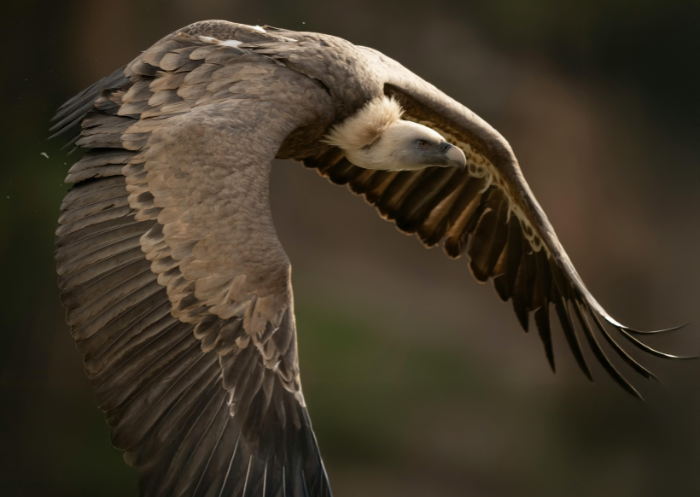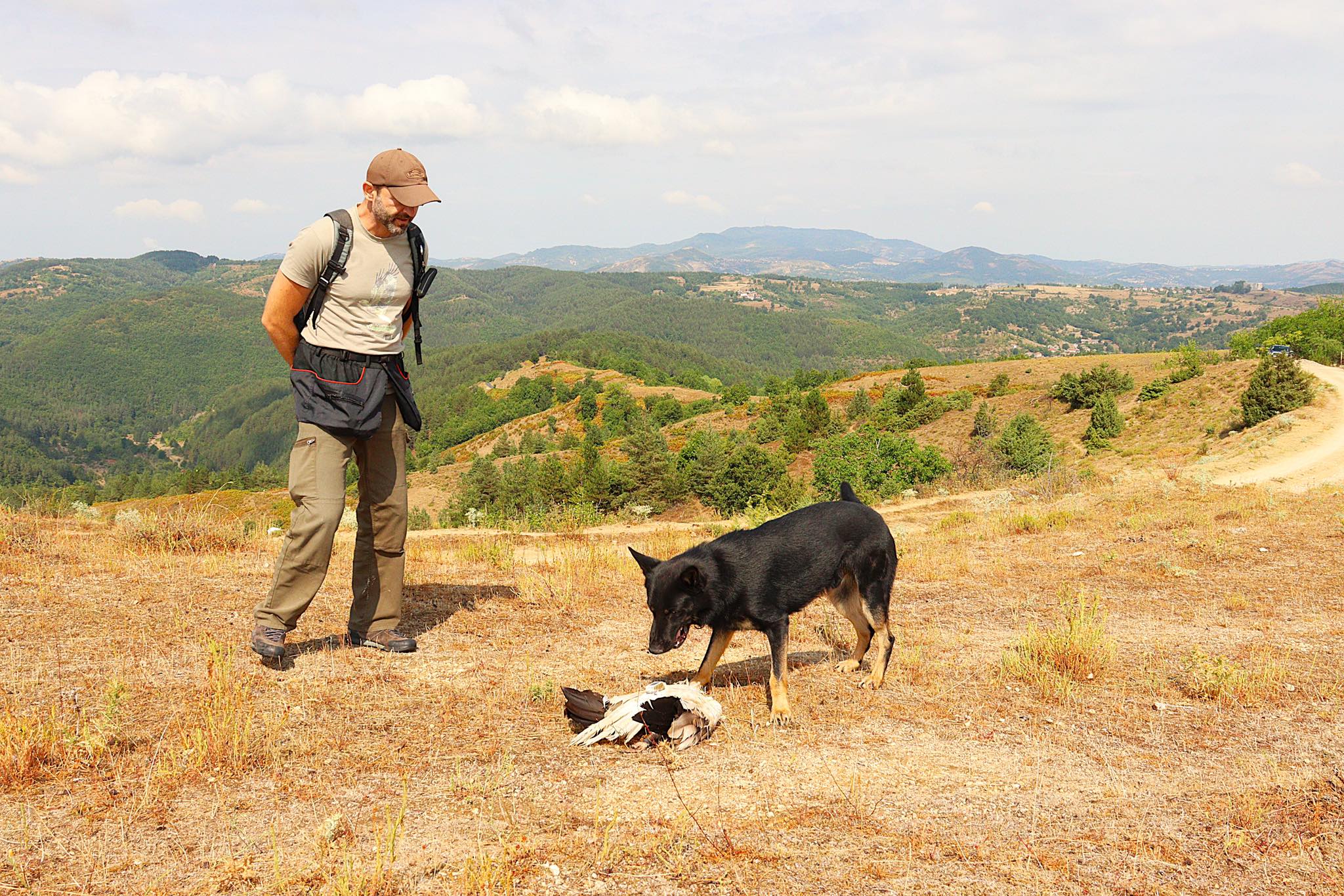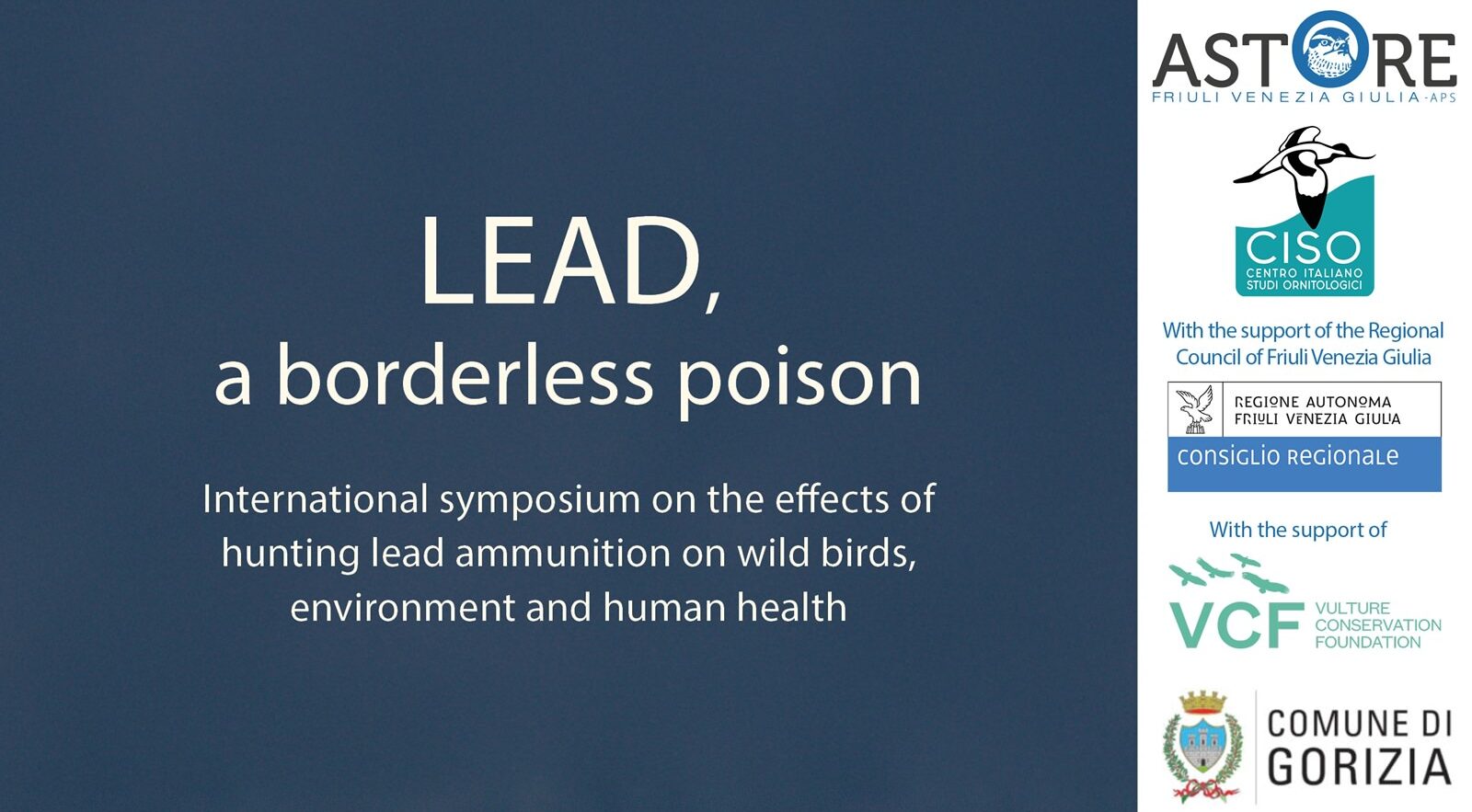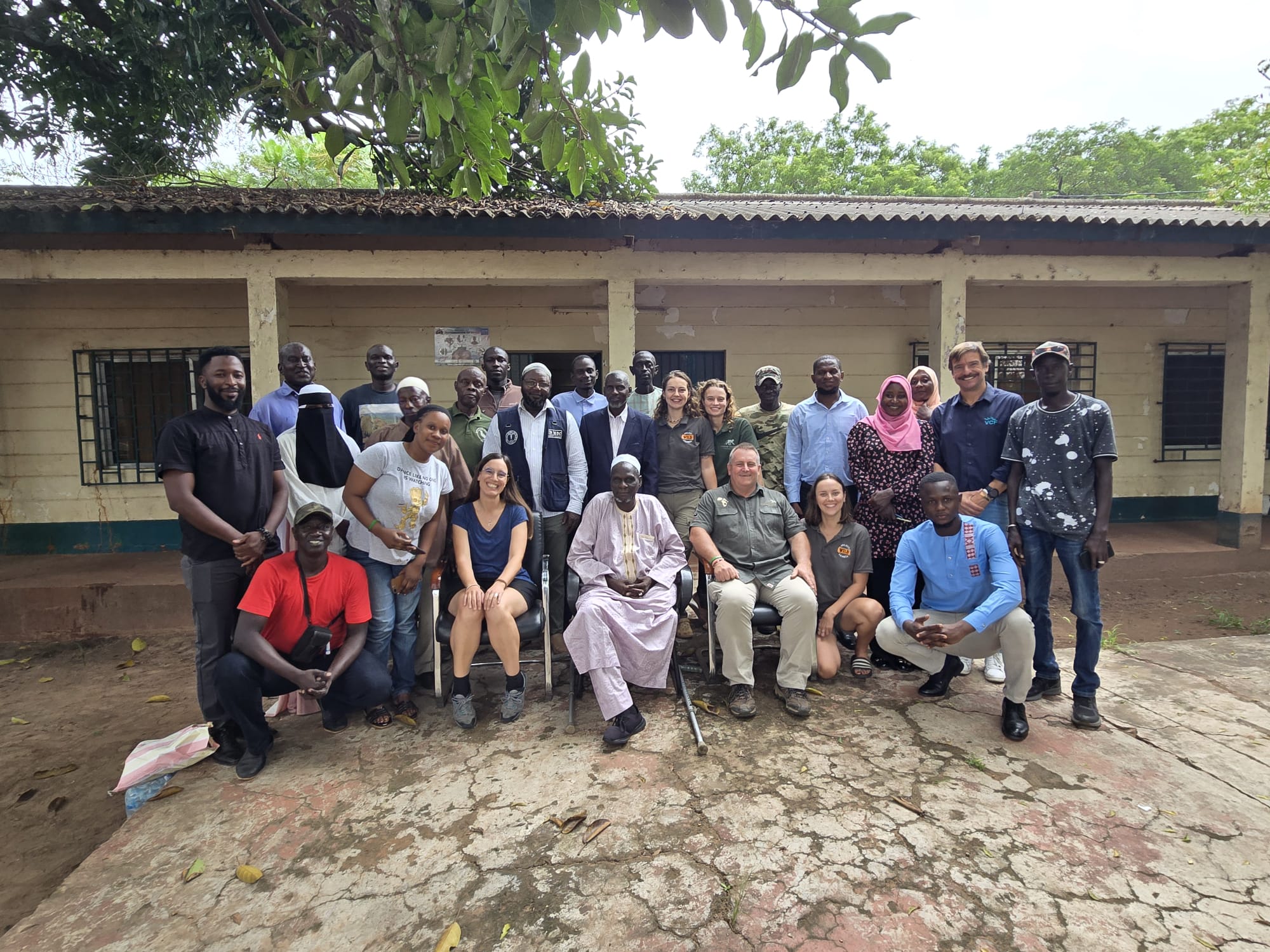On 6 May 2025, tragedy struck South Africa’s Kruger National Park. In what is now considered one of the largest vulture poisoning events in Southern African history, a total of 123 vultures were found dead—and 83 more are now recovering, thanks to the swift, coordinated efforts of conservationists, rangers, veterinarians, and aviation teams.
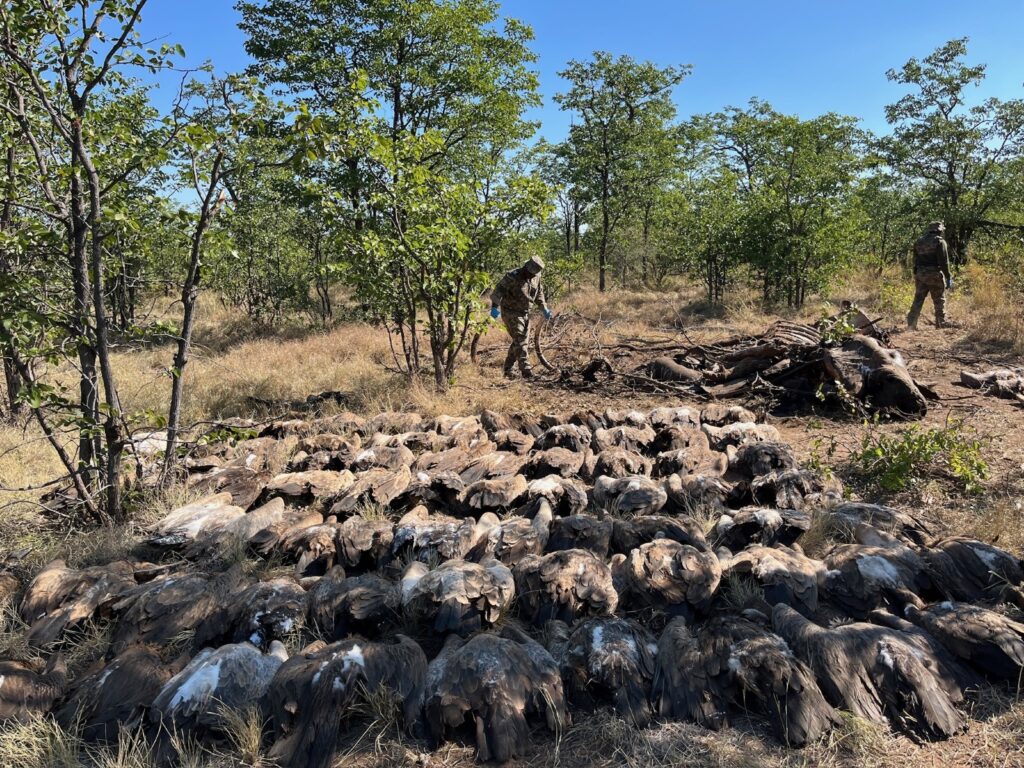
A shocking discovery
The alarm was raised at 06:05 by the Endangered Wildlife Trust’s (EWT) wildlife poisoning surveillance and detection system, which picked up suspicious activity in the remote Mahlangeni Section of Kruger. By 08:20, a joint team of SANParks rangers and EWT officials had arrived on site to uncover the grim reality: an elephant carcass had been deliberately laced with highly toxic agrochemicals—a calculated act by poachers to kill vultures for body parts used in the illegal wildlife trade.
Lying around the carcass were the bodies of 116 vultures, killed almost instantly by the poison. Among them:
- 102 White-backed Vultures (Gyps africanus) – Critically Endangered
- 20 Cape Vultures (Gyps coprotheres) – Vulnerable
- 1 Lappet-faced Vulture (Torgos tracheliotos) – Endangered
Another seven vultures died in the hours following, bringing the total death toll to 123.
A race against time
Despite the devastation, this tragedy became the stage for one of the most extensive wildlife rescue efforts ever mounted in the region.
The first responders immediately treated two severely poisoned vultures found 500 metres from the site, administering atropine, activated charcoal, and fluids—a critical first aid protocol for pesticide poisoning in birds.
Help arrived quickly. Veterinary teams from Moholoholo Wildlife Rehabilitation Centre, Briner Veterinary Services, and Wildscapes Veterinary Services joined the operation, supported by SANParks aerial units, including helicopters deployed for the first time ever in a wildlife poisoning response of this scale.
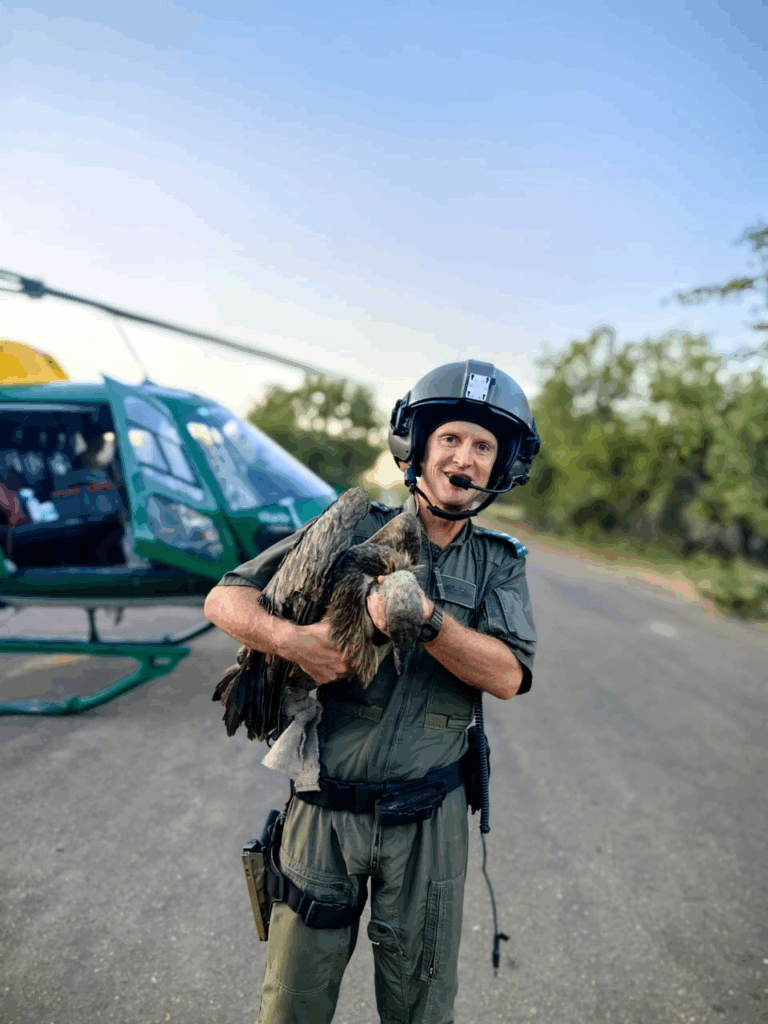
The rescue by the numbers:
- 84 vultures rescued alive
- 45 transported via EWT’s vulture ambulance
- 39 airlifted by helicopter to SANParks’ K9 unit in Phalaborwa
- Others were later moved to Moholoholo for round-the-clock care
The veterinary teams worked tirelessly through the night. Despite the challenging conditions, only five of the rescued vultures succumbed—an incredible 96% survival rate among those found alive.
Update: rescued vultures have been relased
81 out of the 84 rescued vultures have been successfully rehabilitated and released. At the end of June, after almost two months of intense care at the Moholoholo Wildlife Rehabilitation Centre in Limpopo, the birds have finally being returned to the wild.
A lethal threat
Vultures have highly efficient digestive systems designed to break down harmful bacteria and pathogens, but they are not equipped to handle synthetic agrochemicals or poisons like carbamates and organophosphates, which are commonly used in wildlife poisoning. These toxins act quickly, often killing birds within minutes.
But with populations already in free fall—White-backed Vultures have declined by over 80% in just four decades—incidents like this push them ever closer to extinction. Worse still, May is peak breeding season, and most vulture pairs raise just one chick per year.
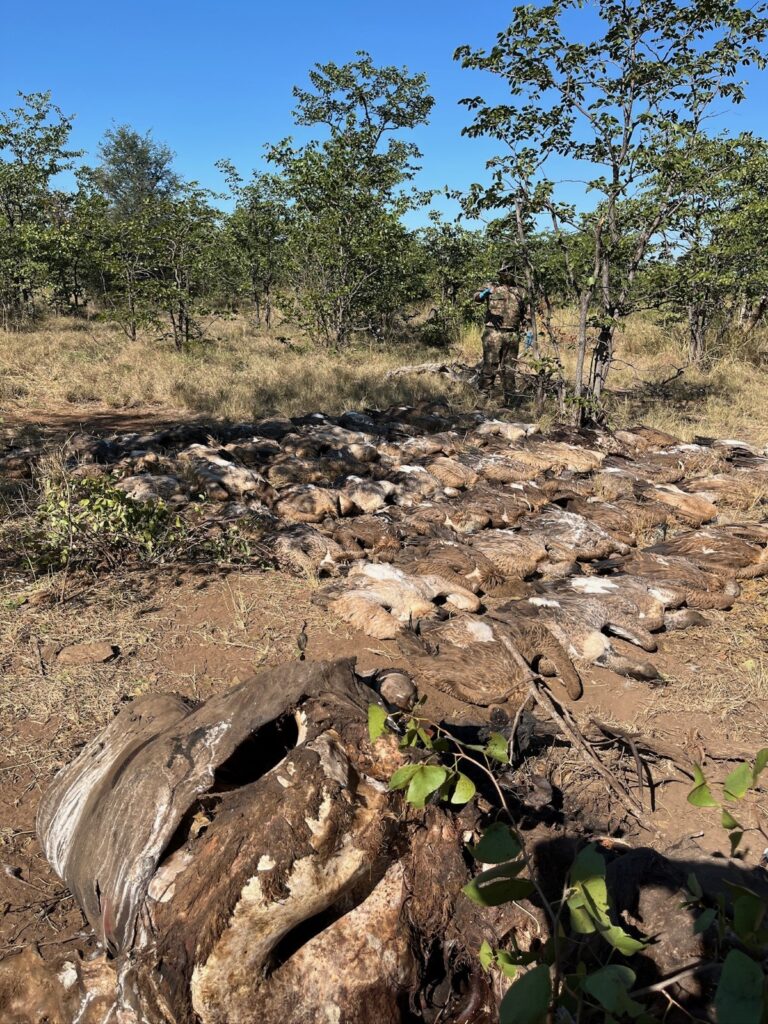
A growing, grim pattern
This attack follows a worrying trend. Poachers increasingly use poisoned carcasses to eliminate vultures—either to harvest their body parts or to prevent them from revealing the location of illegal activities by circling above kills.
In 2019, more than 530 vultures and two eagles were killed in Botswana using three poisoned elephant carcasses and in 2020 almost 2000 vultures were poisoned to death in Guinea Bissau due to belief-based use. Similar poisoning incidents have been reported across the region, affecting not only vultures but also lions and other apex predators, driven by demand in traditional medicine markets.
Power of collaboration
The success of this rescue underscores what is possible when surveillance, rapid response, and cross-sector partnerships work together. Over 20 individuals from SANParks, EWT, veterinary services, and aviation teams took part in the operation.Thanks to everyone involved!
At the Vulture Conservation Foundation, we remain committed to fighting this silent crisis—supporting partners across Africa and Europe in protecting vultures from poisoning and other threats.
